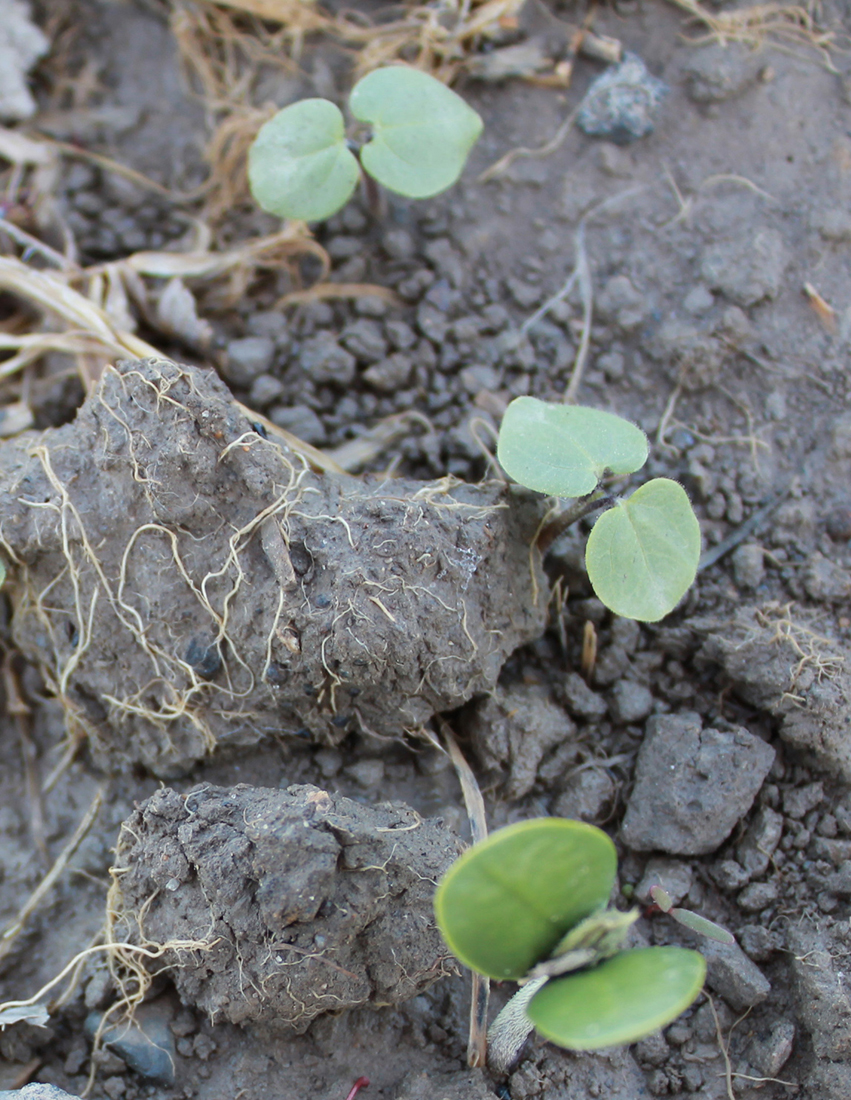Velvetleaf
- Mallow (Malvaceae family):
- Abutilon theophrasti Medik.
- EPPO code:
- ABUTH
- Other names:
- Butterprint, elephant ear, pie-marker
Species information
- Lifecycle:
- Annual.
- Propagation:
- Reproduces by seed.
- Emergence:
- Typically, velvetleaf emerges just before and after corn and soybean planting. It is not uncommon, however, to see new seedlings emerge into the summer months.
- Habitat:
- While velvetleaf is found throughout Ontario, it is most prominent in southern Ontario. Most commonly, it grows in row crops like corn, soybeans and edible beans.
- Competitiveness:
- Agriculture and Agri-Food Canada research has shown that velvetleaf densities of 20,000 plants/ac can result in a 15% yield loss in corn and soybeans.
Identification clues
Seedlings
- Cotyledons:
- Orbicular with long petiole and numerous short hairs.
- Leaves:
- The stem leaves of velvetleaf are alternate, heart shaped with a pointed apex, and extremely soft and “velvety” to the touch; leaf margins are round-toothed.
Mature plant
- Stem:
- Velvetleaf’s stem is erect, 1–2 m tall, and covered with numerous soft hairs that give it a “velvety” feel. The stem is branched near the top of the plant.
- Flowers:
- Velvetleaf flowers are yellow, but can sometimes appear orange especially when closed. Flowers have five petals and five sepals.
- Seeds:
- Enclosed in a circular seedpod which is a cluster of of 12–15 sections (mericarps), which are green at first and turn black at maturity. They persist on leafless stems at the end of the season.
- Roots:
- Taproot
Often mistaken for
Velvetleaf is a very distinctive plant that is rarely confused with anything else, mainly because of its soft “velvety” feel, heart-shaped leaves and five, yellow-petaled flowers.





Updated: August 14, 2023
Published: January 13, 2023